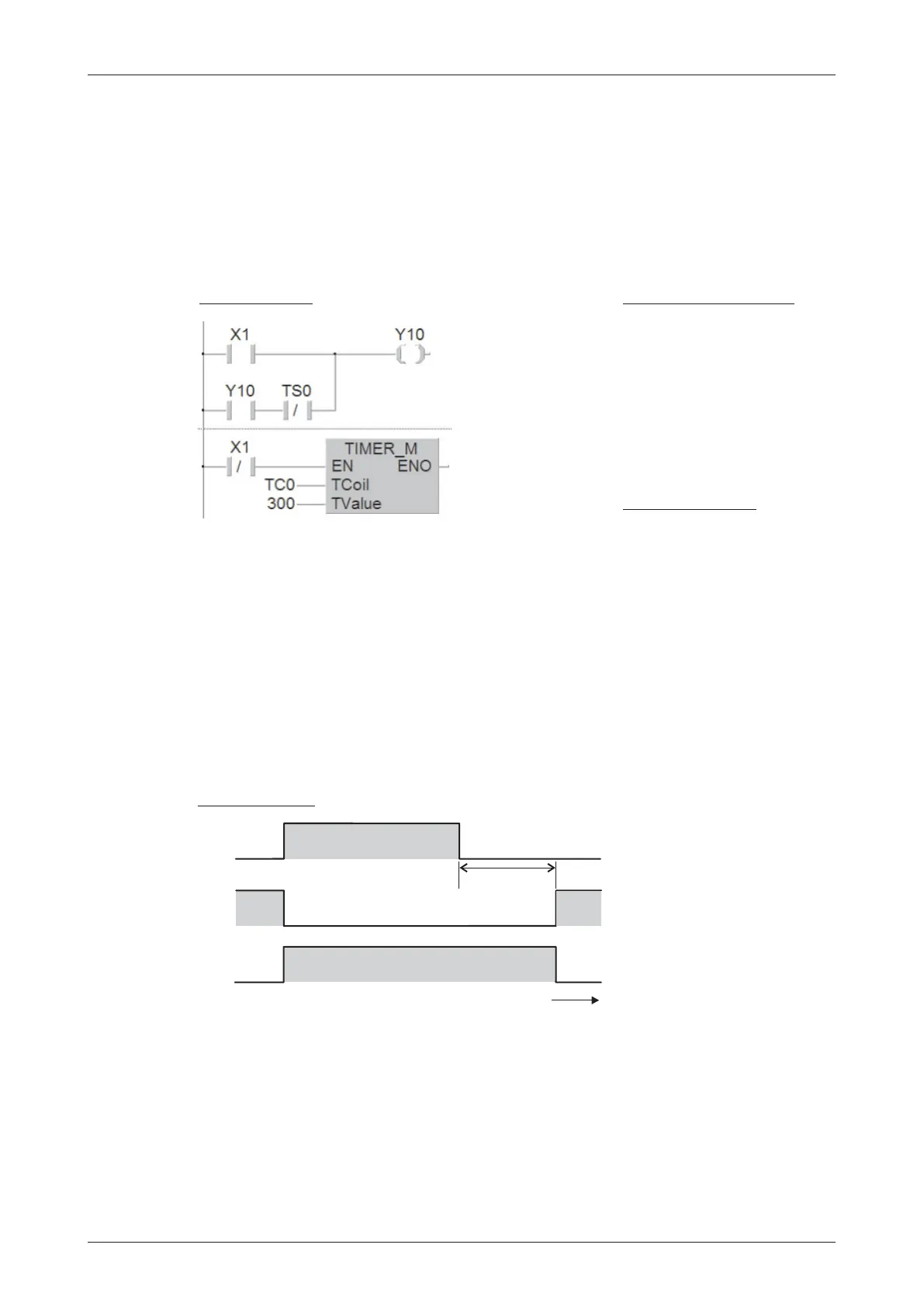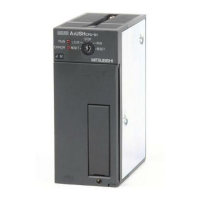5.7.2 Switch-off delay
By default, all the timers in MELSEC PLCs are delayed make timers, i.e. the output is switched
ON after the defined delay period. However, you will often also want to program a delayed
break operation (switch OFF after a delay). A typical example of this is a ventilation fan in a
bathroom that needs to continue running for several minutes after the lights are switched off.
Program version 1 (latching)
As long as input X1 (e.g. a light switch) is on output Y10 (fan) is also on. However, the latching
function ensures that Y10 also remains on after X1 has been switched off, because timer T0 is
still running. T0 is started when X1 is switched off. At the end of the delay period (300 x 0.1s =
30s in the example) T0 interrupts the Y10 latch and switches the output off.
MELSEC System Q Beginners Manual 5 – 17
Devices in Detail Programming Tips for Timers and Counters
Ladder Diagram
MELSEC Instruction List
LD X1
LD Y10
ANI T0
ORB
OUT Y10
LDI X1
OUT T0
K300
IEC
Instruction List
LD X1
OR(
Y10
ANDN TS0
)
ST Y10
LDN X1
TIMER_M TC0, 300
Y10
X1
T0
30 s
t
Signal sequence

